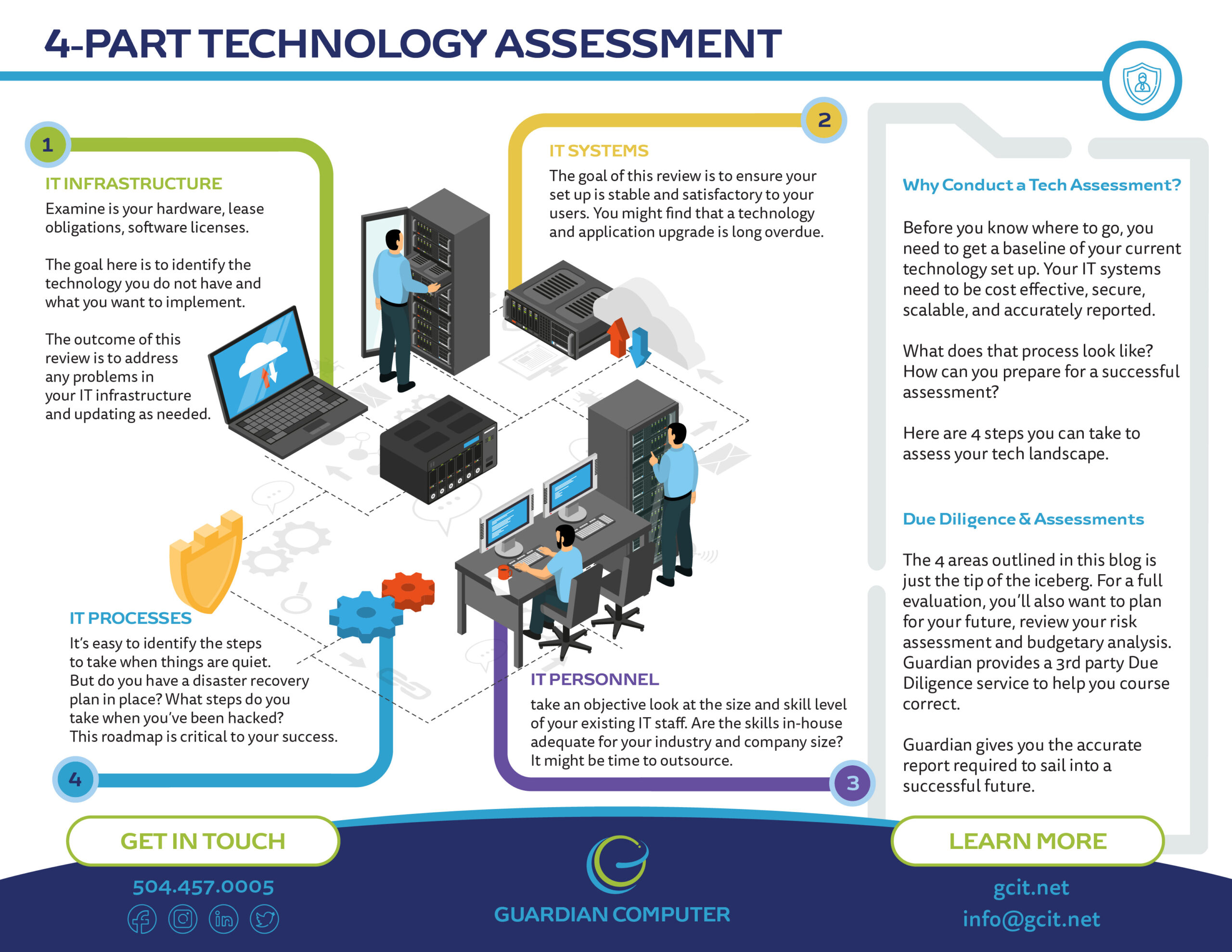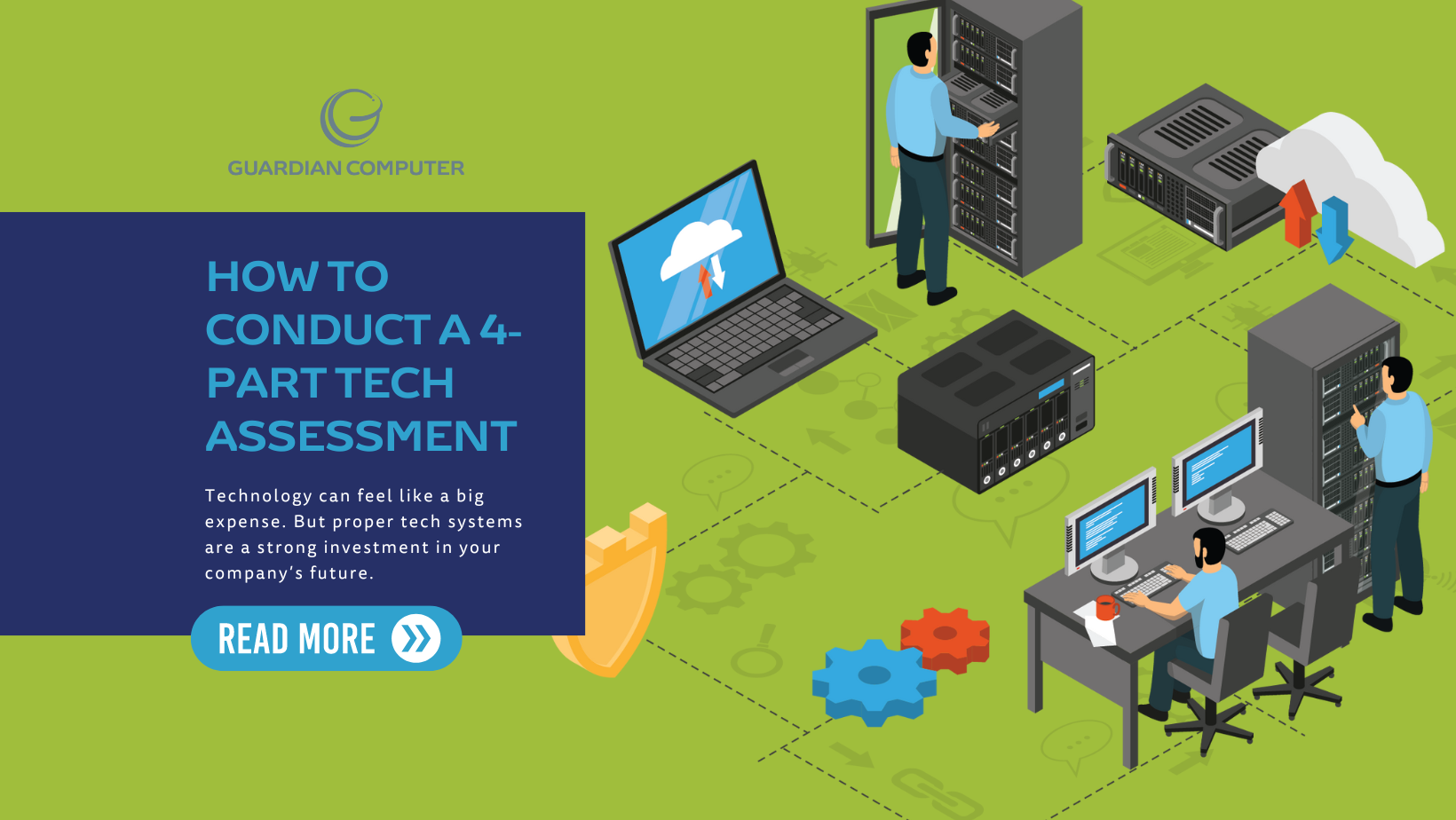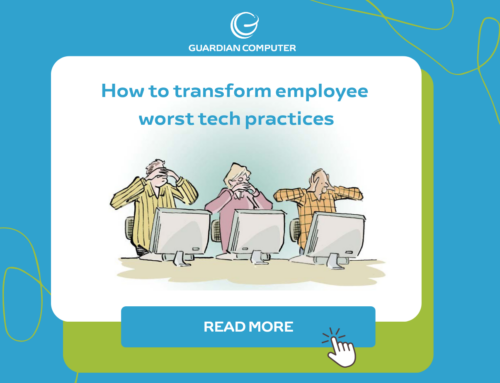If you’re a business owner looking make big moves to combat a recession, a good place to start is a technology self-assessment. We’re all feeling it. Employees, business owners, and vendors alike are uneasy about the current economic outlook.
Technology can feel like a big expense. But proper tech systems are a strong investment in your company’s future.
Why Conduct a Technology Self-Assessment?
Before you know where to go, you need to get a baseline of your current technology set up. Your IT systems need to be cost effective, secure, scalable, and accurately reported.
Additionally, if you’re preparing for a merger or acquisition an IT due diligence is required. Due Diligence is a full-scale appraisal of everything a company has done, currently does, or should do with IT.
Guardian provides a thorough 3rd party due diligence assessment. This gives you an accurate report of your IT systems required during a merger or acquisition.
What does that process look like? How can you prepare for a successful assessment? Our last blog discussed the immediate actions you need to take after your IT personnel quit. This article dives into the next steps once the storm settles.
Here are 4 steps you can take to assess your tech landscape.

The 4 Parts to a Technology Self-Assessment
A technology self-assessment consists of a detailed review in 4 key areas. These include infrastructure, systems, personnel, and process.
Step 1: Assess your IT infrastructure. The first thing to examine is your hardware, lease obligations, software licenses. The goal here is to identify the technology you do not have and what you want to implement. The outcome of this review is to address any problems in your IT infrastructure while updating as needed.
Step 2: You’ll need to look at your IT systems. Every organization requires a unique system based on the type of users and the size of the company. The goal of this review is to ensure your set up is stable and satisfactory to your users. You might find that a technology and application upgrade is long overdue.
Step 3: Assess your IT personnel. After you’ve reviewed the hardware, it’s time to assess the IT personnel. It’s important to take an objective look at the size and skill level of your existing IT staff. Are the skills in-house adequate for your industry and company size? What does an effective ideal department look like?
Step 4: Finally, you need to examine your process. Successful IT strategies depend on good communication and well-developed processes. It’s easy to identify the steps to take when things are quiet. But do you have a disaster recovery plan in place? What steps do you take when you’ve been hacked? This roadmap is critical to your success.
Plug the Holes in Your Ship
The 4 areas outlined in this blog is just the tip of the iceberg. For a full evaluation, you’ll also want to plan for your future, review your risk assessment and budgetary analysis. Guardian provides a 3rd party Due Diligence service to help you course correct.
You want to make sure that your systems are cost-effective, secure, and scalable. Guardian gives you the accurate report required to sail into a successful future.
Learn more about our assessment service.







